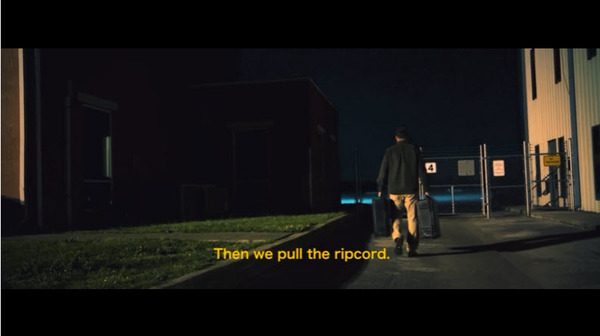True The Vote is about to drop an information bomb regarding election fraud
May 10, 2022
In his smash-hit move, 2000 Mules, Dinesh D’Souza carefully, and entertainingly, demonstrated how True The Vote, a voter integrity organization, was able to prove incontrovertibly that leftwing non-profits used mules to stuff ballots, bringing in, at a minimum, hundreds of thousands of Biden votes in swing states. The movie, however, describes the data without releasing it and does not identify the non-profits. Now, though, True the Vote is planning to publish everything. That’s an information bomb that should blow apart any claims that Biden’s victory wasn’t the result of massive fraud.
The genius of True the Vote was that it figured out how to use commercially available cell phone location data, along with videos of drop boxes, to prove that, in the five critical swing states that gave the election to Joe Biden, leftist non-profits used mules to deliver dozens of ballots to drop boxes. The numbers are staggering: At a minimum, 400,000 illegal ballots in the states that turned the election in Biden’s favor.
In the review I wrote about the movie, I explained in somewhat more detail how the program worked, but I urge you to see the film for yourself. The only thing I found a bit disappointing was the fact that the movie did not name the non-profits involved.
Well, that disappointment is over. True The Vote has announced that, in a few weeks, it will make available to the public every single bit of information it has regarding the drop-box fraud. Or, as Catherine Engelbrecht, who founded True The Vote calls it, pulling the ripcord:
Releasing the data matters because mainstream media outlets have alternately ignored the movie or, in AP’s case, publishing Ali Swenson’s alleged “fact check.” Swenson insists that cell phone information isn’t as precise as True The Vote claims and that True The Votes’ assumptions are “faulty.”
Swenson’s claim that those cellphone pings are way too vague to be useful is easily debunked. Back in 2018, the New York Times wrote about the extremely detailed information the apps on people’s phones provide:
At least 75 companies receive anonymous, precise location data from apps whose users enable location services to get local news and weather or other information, the Times found. Several of those businesses claim to track up to 200 million mobile devices in the United States — about half of those in use last year. The database reviewed by the Times — a sample of information gathered in 2017 and held by one company — reveals people’s travels in startling detail, accurate to within a few yards and in some cases updated more than 14,000 times a day. (Emphasis added.)
Swenson asserts that the film shows an interview with only one whistleblower who saw people pick up what she “assumed” were payments. True. But the fact is that in cases in which law enforcement has caught up with those mules who deliver multiple ballots to drop boxes, they always do it for money. It is, therefore, a reasonable assumption that, when someone repeatedly goes to a non-profit and then visits between 20-45 drop boxes, that person is not acting out of the goodness of his heart. If law enforcement would arrest these people, we could confirm this assumption.
Swenson quotes a single expert saying that cell phone data really won’t prove whether the person was at, or merely near, the dropbox. What Swenson ignores is that, while putting someone near a single drop box proves nothing, 2000 Mules shows that the cell phone pings revealed that specific people were beating a path to innumerable drop boxes. There is no reason that “delivery drivers, postal workers, cab drivers, poll workers and elected officials” would stop at only two places: leftist non-profits and multiple drop boxes. Only mules would do that.
Swenson argues that, even though True The Vote had video footage of obvious mules stuffing boxes, the movie doesn’t prove that the footage aligns with pings. True. I suspect that proof will come when True The Vote pulls the ripcord.
Another Swenson argument is that showing someone dropping off a stack of ballots doesn’t prove wrongdoing because people are allowed to do so for family members and household members. Considering that the data shows mules averaging 20 to 45 drop boxes, at each of which they dropped off an average of five ballots, I’m thinking those must be very big families…or, perhaps, it’s evidence of election fraud.
The remainder of the “fact check” is the same: Faulty assumptions, inaccurate facts, and extraneous, irrelevant information, all functioning as argument, rather than analysis.
Judging by the AP’s frantic effort to challenge the movie’s premises, in a few weeks it’s going to be fun to see what happens when all of the facts—including the identity of those non-profits—are out there.

Image: True The Vote: This Is Not The End screen grab.



